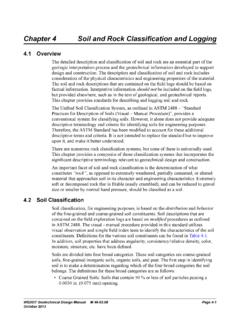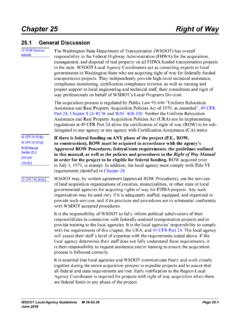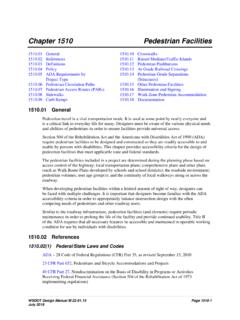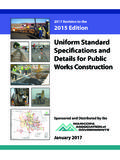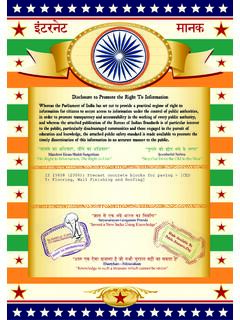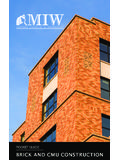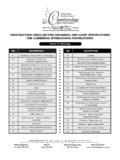Transcription of TR-55 Curve Number Tables
1 APPENDIX 4B TR-55 Curve Number Tables WSDOT Highway Runoff Manual M Page 4B-i April 2014 Appendix 4B List of Tables Table 4B-1 Hydrologic soil series for selected soils in Washington State.. 4B-1 Table 4B-2 Runoff Curve numbers for selected agricultural, suburban, and rural areas (western Washington).. 4B-4 Table 4B-3 Runoff Curve numbers for selected agricultural, suburban, and rural areas (eastern Washington).. 4B-5 Table 4B-4 Curve Number conversions for different antecedent moisture conditions (case Ia = S).. 4B-6 Table 4B-5 n and k values used in time calculations for hydrographs.. 4B-7 Table 4B-6 Values of the roughness coefficient, n.
2 4B-8 List of Tables Appendix 4B Page 4B-ii WSDOT Highway Runoff Manual M April 2014 Appendix 4B TR-55 Curve Number Tables WSDOT Highway Runoff Manual M Page 4B-1 April 2014 Table 4B-1 Hydrologic soil series for selected soils in Washington State. Soil Type Hydrologic Soil Group Soil Type Hydrologic Soil Group Agnew C Dimal D Ahl B Dragoon C Aits C Dupont D Alderwood C Earlmont C Arents, Alderwood B Edgewick C Arents, Everett B Eld B Ashoe B Eloika B Athena B Elwell B Baldhill B Emdent D Barneston C Esquatzel B Baumgard B Everett A Beausite B Everson D Belfast C Freeman C Bellingham D Galvin D Bellingham variant C Garfield C Bernhill B Garrison B Boistfort B Getchell A Bong A Giles B Bonner B Glenrose B Bow D Godfrey D Brickel C Green Bluff B Bridgeson D Greenwater A Briscot D Grove C Buckley C Hagen B Bunker B Hardesty B Cagey C Harstine C Caldwell C Hartnit C Carlsborg A Hesseltine B Casey D Hoh B Cassolary C Hoko C Cathcart B Hoodsport C Cedonia B Hoogdal C Centralia B Hoypus A Chehalis B Huel A Cheney B Indianola A Chesaw A Jonas B Cinebar B Jumpe B Clallam C Kalaloch
3 C Clayton B Kapowsin C/D Coastal beaches variable Katula C Cocolalla D Kilchis C Colter C Kitsap C Custer D Klaus C Custer, Drained C Klone B Dabob C Konner D Dearyton C Lakesol B Delphi D Laketon C Dick A Lance B Larkin B Poulsbo C Latah D Prather C Lates C Puget D TR-55 Curve Number Tables Appendix 4B Page 4B-2 WSDOT Highway Runoff Manual M April 2014 Table 4B-1 Hydrologic soil series for selected soils in Washington State (continued). Soil Type Hydrologic Soil Group Soil Type Hydrologic Soil Group Lebam B Puyallup B Lummi D Queets B Lynnwood A Quilcene C Lystair B Ragnar B Mal C Rainier C Manley B Raught B Marble A Reardan C Mashel B Reed D Maytown C Reed.
4 Drained or Protected C McKenna D Renton D McMurray D Republic B Melbourne B Riverwash variable Menzel B Rober C Mixed Alluvial variable Salal C Molson B Salkum B Mondovi B Sammamish D Moscow C San Juan A Mukilteo C/D Scamman D Naff B Schneider B Narcisse C Schumacher B Nargar A Seattle D National B Sekiu D Neilton A Semiahmoo D Newberg B Shalcar D Nez Perce C Shano B Nisqually B Shelton C Nooksack C Si C Norma C/D Sinclair C Ogarty C Skipopa D Olete C Skykomish B Olomount C Snahopish B Olympic B Snohomish D Orcas D Snow B Oridia D Solduc B Orting D Solleks C Oso C Spana D Ovall C Spanaway A/B Palouse B Speigle B Pastik C Spokane C Peone D Springdale A Pheeney C Sulsavar B Phelan D Sultan C Phoebe B Sultan variant B Pilchuck C Sumas C Potchub C Swantown D Tacoma D Vailton B Tanwax D Vassar B Tanwax, Drained C Verlot C Tealwhit D Wapato D Tekoa C Warden B Tenino C Wethey C Appendix 4B TR-55 Curve Number Tables WSDOT Highway Runoff Manual M Page 4B-3 April 2014 Table 4B-1 Hydrologic soil series for selected soils in Washington State (continued).
5 Soil Type Hydrologic Soil Group Soil Type Hydrologic Soil Group Tisch D Whidbey C Tokul C Wilkeson B Townsend C Winston A Triton D Wolfeson C Tukwila D Woodinville B Tukey C Yelm C Uhlig B Zynbar B Urbana C Hydrologic Soil Group Classifications, as defined by the Soil Conservation Service: A = (Low runoff potential): Soils having low runoff potential and high infiltration rates, even when thoroughly wetted. They consist chiefly of deep, well- to excessively drained sands or gravels, and have a high rate of water transmission (greater than in/hr). B = (Moderately low runoff potential): Soils having moderate infiltration rates when thoroughly wetted and consisting chiefly of moderately deep to deep, moderately well- to well-drained soils, with moderately fine to moderately coarse textures.
6 These soils have a moderate rate of water transmission ( in/hr). C = (Moderately high runoff potential): Soils having low infiltration rates when thoroughly wetted and consisting chiefly of soils with a layer that impedes downward movement of water and soils with moderately fine to fine textures. These soils have a low rate of water transmission ( in/hr). D = (High runoff potential): Soils having high runoff potential. They have very low infiltration rates when thoroughly wetted and consist chiefly of clay soils with a high swelling potential; soils with a permanent high water table; soils with a hardpan or clay layer at or near the surface; and shallow soils over nearly impervious material.
7 These soils have a very low rate of water transmission (0 in/hr). *From SCS, TR-55 , Second Edition, June 1986, Exhibit A-1. Revisions made from SCS, Soil Interpretation Record, Form #5, September 1988 and various county soil surveys. This information can also be found online at: TR-55 Curve Number Tables Appendix 4B Page 4B-4 WSDOT Highway Runoff Manual M April 2014 Table 4B-2 Runoff Curve numbers for selected agricultural, suburban, and rural areas (western Washington). CNs for hydrologic soil group Cover Type and Hydrologic Condition A B C D Curve Numbers for Predevelopment Conditions Pasture, Grassland, or Range Continuous Forage for Grazing: Fair condition (ground cover 50% to 75% and not heavily grazed) 49 69 79 84 Good condition (ground cover >75% and lightly or only occasionally grazed) 39 61 74 80 Woods: Fair (woods are grazed but not burned, and some forest litter covers the soil) 36 60 73 79 Good (woods are protected from grazing, and litter and brush adequately cover the soil) 30 55 70 77 Curve Numbers for Postdevelopment Conditions Open Space (lawns, parks, golf courses, cemeteries, landscaping, etc.)
8 :[1] Fair condition (grass cover on 50% to 75% of the area) 77 85 90 92 Good condition (grass cover on >75% of the area) 68 80 86 90 Impervious Areas: Open water bodies: lakes, wetlands, ponds, etc. 100 100 100 100 Paved parking lots, roofs,[2] driveways, etc. (excluding right of way) 98 98 98 98 Porous pavers and Permeable interlocking concrete (assumed as 85% impervious and 15% lawn): Fair lawn condition (weighted average CNs) 95 96 97 97 Good lawn condition (weighted average CNs) 94 95 96 97 Paved 98 98 98 98 Gravel (including right of way) 76 85 89 91 Dirt (including right of way) 72 82 87 89 Pasture, Grassland, or Range Continuous Forage for Grazing: Poor condition (ground cover <50% or heavily grazed with no mulch) 68 79 86 89 Fair condition (ground cover 50% to 75% and not heavily grazed) 49 69 79 84 Good condition (ground cover >75% and lightly or only occasionally grazed) 39 61 74 80 Woods.
9 Poor (forest litter, small trees, and brush are destroyed by heavy grazing or regular burning) 45 66 77 83 Fair (woods are grazed but not burned, and some forest litter covers the soil) 36 60 73 79 Good (woods are protected from grazing, and litter and brush adequately cover the soil) 30 55 70 77 Single Family Residential:[3] Should only be used for Average percent Dwelling Unit/Gross Acre subdivisions >50 acres impervious area[3][4] DU/GA 15 Separate Curve Number DU/GA 20 must be selected for DU/GA 25 pervious & impervious DU/GA 30 portions of the site or DU/GA 34 basin DU/GA 38 DU/GA 42 DU/GA 46 DU/GA 48 DU/GA 50 DU/GA 52 DU/GA 54 DU/GA 56 DU/GA 58 PUDs, condos, apartments, commercial businesses, % impervious Separate Curve numbers must be selected for industrial areas, and subdivisions <50 acres must be computed pervious and impervious portions of the site For a more detailed and complete description of land use Curve numbers, refer to Chapter Two (2) of the Soil Conservation Service s Technical Release No.
10 55 (210-VI- TR-55 , Second Ed., June 1986). [1] Composite CNs may be computed for other combinations of open space cover type. [2] Where roof runoff and driveway runoff are infiltrated or dispersed according to the requirements in Chapter 3, the average percent impervious area may be adjusted in accordance with the procedure described under Flow Credit for Roof Downspout Infiltration and Flow Credit for Roof Downspout Dispersion. [3] Assumes roof and driveway runoff is directed into street/storm system. [4] All remaining pervious area (lawn) is considered to be in good condition for these Curve numbers. Appendix 4B TR-55 Curve Number Tables WSDOT Highway Runoff Manual M Page 4B-5 April 2014 Table 4B-3 Runoff Curve numbers for selected agricultural, suburban, and rural areas (eastern Washington).






